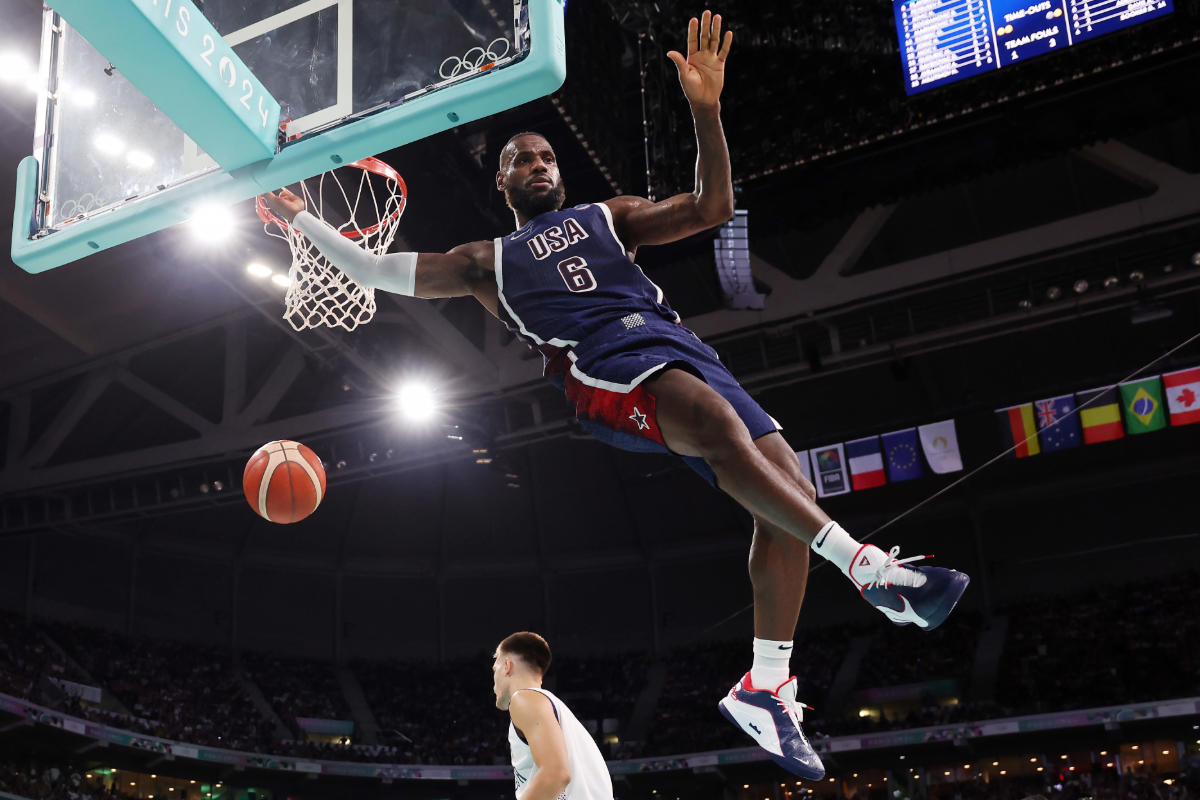The 2024 Paris Olympics have been a spectacle of athletic prowess and strategic mastery, and one of the standout moments so far has been Team USA’s thrilling basketball matchup against South Sudan. As Team USA powered their way into the Olympic quarterfinals, their performance against South Sudan has been nothing short of extraordinary. However, a key subplot has been the decision to bench Joel Embiid, a move that sparked widespread discussion and speculation. In this blog, we delve into how Team USA navigated this challenge and emerged victorious, illustrating the depth and resilience of the American squad.
The Stage is Set: Paris 2024 Basketball Drama Unfolds
The 2024 Olympic basketball tournament has been a showcase of the sport’s finest talents, with teams from around the globe battling for supremacy. For Team USA, the path to the quarterfinals was paved with anticipation and high expectations. Their opponent in the knockout stage, South Sudan, was a team making waves with its surprising rise in the international basketball scene. However, it was not just the competition that had everyone talking; it was the strategic decisions made by Team USA’s coaching staff that captured the limelight.
Joel Embiid’s Benching: A Strategic Masterstroke or Controversial Decision?

Joel Embiid, the Philadelphia 76ers superstar, was a crucial part of Team USA’s roster heading into the Paris Olympics. Known for his dominant presence on the court and his ability to turn the tide of a game, Joel Embiid’s benching against South Sudan was a move that drew considerable attention. The decision was not just about player rotation but a calculated strategy to maximize Team USA’s effectiveness on the court.
The reasons behind Embiid’s benching were multi-faceted. Firstly, it was a strategic choice by Coach Steve Kerr to exploit South Sudan’s defensive vulnerabilities. By benching Joel Embiid, Kerr aimed to adjust the team’s playing style and pace, focusing on a faster, more fluid offense that could outpace and outmaneuver the South Sudanese defense. Additionally, the decision allowed other players to step up and showcase their skills, providing Team USA with a deeper bench and more versatile options.
The Match: A Tactical Masterclass
When the game against South Sudan tipped off, it was clear that Team USA had come prepared. The absence of Embiid did not slow them down; instead, it ignited a new level of intensity and teamwork. From the opening whistle, Team USA demonstrated their offensive prowess and defensive discipline.
First Half: Setting the Tone
The first half was characterized by a high tempo and relentless pressure from Team USA. With Joel Embiid on the bench, the team utilized a perimeter-focused strategy, with players like Anthony Edwards and Tyrese Haliburton taking charge. Edwards, known for his explosive scoring ability, provided a crucial offensive spark. Haliburton’s playmaking skills were on full display as he orchestrated the offense with precision, ensuring that Team USA maintained a consistent lead.
South Sudan, while resilient, struggled to keep pace with the dynamic offensive movements of Team USA. Their defense, although initially effective, was soon overwhelmed by the speed and agility of the American players. The first half ended with Team USA holding a comfortable lead, setting the stage for a commanding performance in the second half.
Second Half: Capitalizing on the Lead
The second half saw Team USA continuing their aggressive play. The benching of Joel Embiid allowed the team to experiment with different lineups and strategies. This flexibility was evident as Team USA’s defense tightened, and their offense became even more potent. The team’s ability to adapt and adjust in real-time was a testament to their preparation and the strategic foresight of Coach Kerr.
One of the standout performances of the second half came from Jalen Brunson, whose defensive tenacity and ability to score in clutch moments further solidified Team USA’s position. Brunson’s contribution was a key factor in maintaining the lead and ensuring that South Sudan had little chance to mount a comeback.
The Reactions: A Mixed Bag of Praise and Criticism
Joel Embiid’s benching did not go unnoticed by fans and analysts alike. Social media buzzed with reactions ranging from admiration for Coach Kerr’s bold decision to criticism questioning the exclusion of a star player. While some praised the strategic move for its effectiveness, others debated whether Embiid’s presence might have altered the game’s dynamics even further.
The general consensus, however, was that Team USA’s victory against South Sudan was a result of collective effort and strategic acumen. Embiid’s absence allowed other players to shine and demonstrated the depth of the American squad. It also highlighted the coaching staff’s ability to make tough decisions in high-stakes situations, ultimately contributing to Team USA’s success.
Looking Ahead: Team USA’s Road to Gold
With their victory over South Sudan, Team USA has secured their place in the Olympic basketball quarterfinals. The win not only showcased their ability to adapt and perform under pressure but also set the stage for an exciting continuation of their Olympic journey.
As Team USA prepares for the next phase of the tournament, the question of Joel Embiid’s role will continue to be a topic of discussion. Will he return to the starting lineup, or will Coach Kerr opt for a similar strategy? The answers will be revealed as the tournament progresses, but one thing is certain: Team USA’s journey in Paris 2024 is far from over, and the quest for Olympic gold remains the ultimate goal.
Conclusion
Team USA’s victory over South Sudan at the 2024 Paris Olympics was a display of basketball excellence and strategic brilliance. Joel Embiid’s benching, while controversial, proved to be a key factor in the team’s success, allowing them to leverage their strengths and adapt to the challenges posed by their opponents. As the Olympic tournament continues, Team USA’s performance will be closely watched, with fans and analysts eager to see how the team’s strategies evolve and how they continue to chase their gold medal aspirations.









Leave a Reply